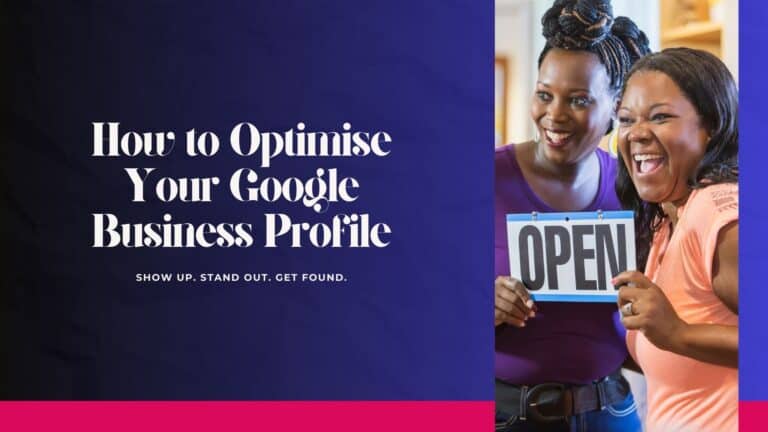Essential Elements of a Successful Website – Don’t start without reading this!
Note: This post may contain affiliate links; I may earn a commission (at no extra cost to you) if you make a purchase via my links. See my disclosure for more info.

Table of Contents
Let’s Get Started!
Planning a new website design for your business can be daunting, so I’ve put together an Essential Elements of a Successful Website Content Guide! There isn’t a one-size-fits-all solution, but there are a few basic functions and content areas you should include to make it an effective marketing tool. From thorough contact information to customer testimonials, here are the essentials that every small business website should have for it to effectively help you do business.
1. Homepage
If nothing else, you’ll need a Homepage, so this really is the most essential element of any website. This is the page most people will see first, and as such, it should tell everyone who you are and what, exactly, it is that you do. That means clearly stating your name and summing up your products or services. A clear description will attract the visitor’s attention immediately within 2-3 seconds, and encourage them to stay on your website longer. The content on your homepage should be intriguing enough to capture the attention of your visitors within seconds.
What to include:
A short description of who you are and what you do, a brief explanation of your services and products, and perhaps some bullet points on how you can help your potential customer or client.
2. About Page
People do business with other people, and visitors want to learn a bit more about who the people are behind the company. The about page is an essential element and often one of the most visited page on any website. This page should give a brief summary of who you are, your company history and what isolates you from the competition.
What to include:
A summary of your company, whom it employs (with biographies and pictures of the staff, or just yourself if you are a sole proprietor), any special achievements you received, and the ways you differ from others that provide the same product or service.
3. Services Page (if you offer services)
Here you can list details about the services you provide. Begin the page with a summary of your services prior to outlining them. If your services are vast and their descriptions are quite extensive, consider dividing them into sections, as well as adding a link to a landing page, where readers can learn more about a particular service.
What to include:
A synopsis of services presented, bullet points of services with short explanations, links to learn more about specialized services (if you desire), the advantages of using your services, and how they differ from the services your competition offers.
4. Products Page (if you offer products)
This is your chance to offer details about the products you sell. Begin the page with a short summary of your products before listing them. If you sell multiple products and have extensive information on each product, consider dividing them into categories and adding a link to their product pages.
What to include:
An outline of products available, short descriptions of each product, links to product pages that contain more information, what the customer can expect by purchasing those products, and why customers should buy those products from you, rather than your competition.
5. FAQs Page
The FAQs page is your space to answer the most frequent questions you are asked. The frequently asked questions (FAQ) page will tell everyone – on one page – what they need to know. This will save you time answering those same questions on an individual basis. Provide honest answers for each one. Your answers should be a call to action, and persuade a potential customer to take the next step and buy whatever you’re selling.
What to include:
The most common questions you are most frequently asked should be on this page. Such questions should also remove any doubts a customer may have, in order to make them feel secure enough to make a purchase from you.
6. Customer Testimonials
This is your chance to show off positive reviews your company has received. Where possible, include photos and contact info of the author (a link their social media account, not their personal phone number). This will add authenticity to each testimonial. Anyone can write a review, but those with photos of real people that can be traced to an actual source add credibility and establish trust.
Testimonials and case studies are also a great way of showing the transformation you provide. Honest words from others help make your products or services more tangible to customers who are visiting you online. People love to hear stories from real people.
What to include:
A brief paragraph of praise from customers, perhaps as long as a sentence or two. Include photos and contact info of the reviewer, preferably with a headline above each testimonial, to catch a customer’s eye.
7. Contact Page
Your contact page should show potential customers all the ways they can get in touch with you. Make it easy for people to communicate with you.
What to include:
All of your social media accounts, your mailing address, phone, email address, and even your business hours. We shall also add a contact form. If you have a bricks and mortar business we shall also include your address, and a link to your location in Google maps.
8. Blog
This isn’t a page per say, as a blog is the sum of all blog posts. A blog is a website, or a section of a website, made up of topically related blog posts (like journal entries). Blog posts are usually listed in reverse chronological order with the most recent blog post appearing first. If you have a small business website without a blog then you are seriously missing out! Think of your blog as your greatest and most affordable marketing tool. A blog drives traffic and leads/sales. A survey by HubSpot found that 57% of businesses who blog have generated a lead from it. A blog gives your company a voice, it creates a place where you can tell your company’s story, share your expertise and engage with your customers.
What to include:
First and foremost you need to do a bit of strategy work, you need to know why you are starting a blog and who you are blogging for (your target audience). Next you need to map out what your blog should be about, i.e. what you should write about and the topics to cover. Think of how you write and the language you use, most of us don’t like to read academic journals so don’t be afraid to be conversational and casual in the way you write. Quality trumps quantity. Studies suggest that long-form and in-depth blog posts of at least 2500 words outperform shorter shallow blog posts, when it comes to search engine optimisation and getting shared on social media.
9. Press/Latest News Page
This is where you can address the media. Here, you should post links to articles written about your business, press releases, advertisements, videos featured on other platforms, and any other recognizable commercial accomplishments.
What to include:
Ways the media can get in touch with you, links to download PDFs and photos, and press releases. If you have a media or press kit, post it here, so the media can learn more about your company prior to further publicity.
10. Images/Video
Customers like pictures, so it’s really important to “show up” on your website. And they like to see that you know what you’re doing. If your company provides a service such as landscape design or beauty treatments, show before and after pictures of your work.
If your service is something less tangible, such as life coaching, show pictures of your friendly team and your clean, comfortable office. Better yet, include video. If you don’t have any of these kinds of photos, think about including imagery of the recognisable landmarks from your area to show you are part of the community. I’d be happy to recommend a brand photographer if you’re in the local area.
If you sell products then customers will need to see beautiful product images.
11. Logo
People expect to see a professionally designed logo. If you already have a logo please send it over, along with your favicon, as an .EPS, .PNG or .SVG (or all of the formats, if you have them). If you don’t yet have a logo (or favicon), I can help by designing one for you, just get in touch.
12. Subscription Offer
I don’t mean like a magazine or monthly gift box – offering your site visitors a chance to stay up-to-date via a subscription to your blog posts or email newsletter is a great way to stay top-of-mind for customers.
A subscription will let you share information about your company through email marketing and build your email list at the same time. Use this list to share information you think your clients and prospects will find valuable whenever you have it.
13. Social Media
List out the social media channels that you use regularly, along with your handles. You don’t need to be on all of them, just pick 2 or 3. We’ll link directly to your pages so website visitors can find you quickly and easily.
Top tip: If you haven’t yet created your social profiles, then I recommend making your handles exactly the same across all platforms. For example my website is www.treeduckdesign.com and my social handles across all platforms is @treeduckdesign
14. Keywords
Have a think about which keywords you want to rank for in Google searches. What do you want people to be typing in in order to find you? Use descriptions of your products and services plus the areas where you work. Using these keywords throughout your text, will help your ranking in Google.
Conclusion
So there you have it – The top 14 Essential Elements of a Successful Website. I hope that helps. Now it’s time to put your content together. I recommend working through this list and using the checklist below to help you. And once you’re ready here’s a great place to start auditing/reviewing your website.
Essential Elements of a Good Website Checklist
- Business Name
- Strap-line
- Logo
- Favicon
- Photos of you
- Photos of your products or services
- Signature
- Home page
- About Page
- Services Page
- Products Page
- FAQs
- Testimonials
- Blog Posts
- Press / Latest News Page
- Contact Page
- Social Media Links
- Mailing List Provider
- Keywords
If you’d like help writing your website copy we have some excellent copywriters ready to get to work. Get in touch today!








